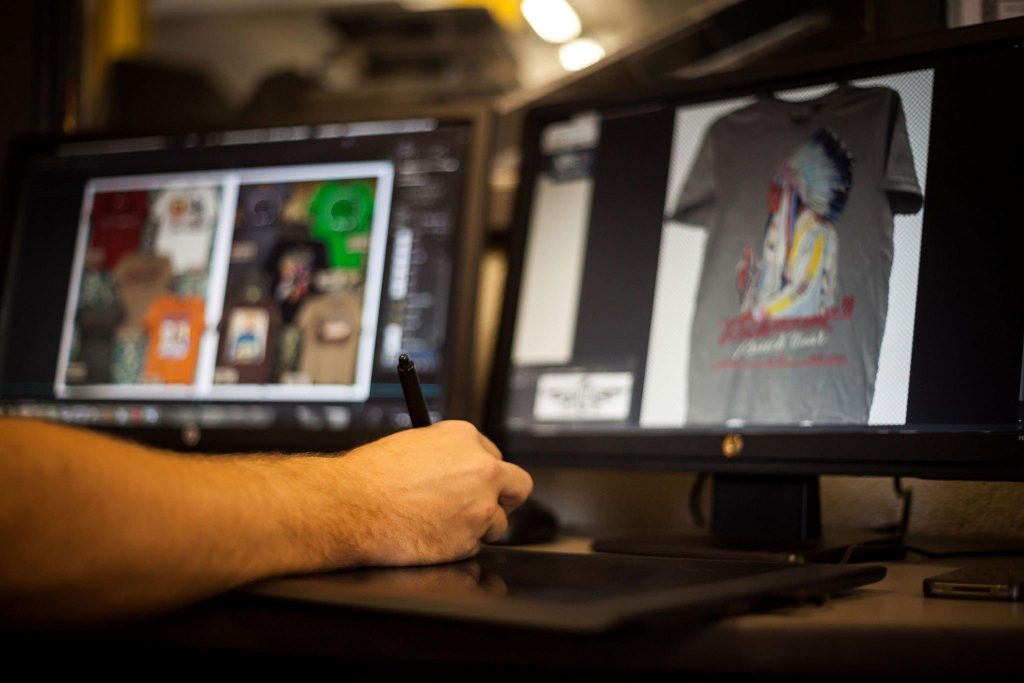Which Printer Is Used For Textile Printing?

If you want to start your own custom all-over print t-shirt business, you need to know about the numerous t-shirt printing techniques or approaches. What printing method is ideal for you depends on a number of factors, like the shirt material, the required production volume, the designs you want to print, the number of colors you want to use, etc.
The commercially available printing methods can be broken down into the following categories, according to the underlying technology:
- Printing with a digital inkjet directly on clothing (DTG)
- Direct digital inkjet printing on fabric
- Digital inkjet printing, heat transfer, and screen printing
But here are a few more methods explained in detail so that you can choose the one that suits you.
-
Inkjet Printer
By utilizing an inkjet printing technique known as DTG printing, it is possible to print designs on a t-shirt that have photographic quality, full color, and high resolution. Printing using DTG is the method that is best suited for artwork or designs that are regarded to be too sophisticated for other types of printing techniques.
Because we use DTG digital printing technology, we are able to fully print on shirts in a wide variety of colors and with an extremely high level of detail.
-
Printing directly on the fabric
Fabrics can be printed directly by employing a printing technique known as direct-to-fabric printing. Printing with cut patterns or printing in a consistent manner over the entire surface may be involved. Printing, cutting and stitching are the phases involved, whereas DTG printers perform cutting before printing and stitching before printing. Direct-to-fabric printing technologies are able to produce vibrant, one-of-a-kind designs despite their low ink use.
Direct-to-fabric printers are capable of printing on a wide variety of fabrics. Printing that is done directly into the fabric, as opposed to printing directly onto the garment, might result in more artistic results.
-
Sublimation Printing Technique or Heat Transfer Printing
This technique involves transferring a printed design from transfer paper to cloth by applying heat and pressure to the transfer paper. Printing with this technology is restricted to polyester or materials that are predominantly composed of polyester.
Utilizing materials that attempt to imitate cotton or viscose is a waste of time. The appropriate text or graphic for the t-shirt is produced digitally using sublimation ink on specialist heat transfer paper. The paper is then transferred to the garment using heat.
-
Screen Printing
The multiple-station large-volume screen printing step-by-step system is the most common method used for printing all over t-shirts, and it is utilized for orders that are placed in bulk. In this particular procedure, the T-shirts are printed on utilizing screens.
This approach is the most effective one for printing large quantities of t-shirts in bulk orders. Depending on the design, the quality of the ink, the amount of pressure that is applied, and the number of strokes that are taken, one gallon of ink that is compatible with screen printing equipment can print up to 500 t-shirts. Because of this, it is a particularly cost-effective method of printing on t-shirts.
-
Computerized printing
Digital printing on fabric, like digital printing on paper, eliminates the need to invest heavily in order to produce a single print (e.g., printing screens). Digital printing on cloth can be thought of as an advanced version of a standard home inkjet printer. Custom cushion covers can be printed with any design, regardless of the amount of colors used or the degree of shading between them, using this process.
-
Dye-sublimation printing
Popularly employed in the printing industry for the purpose of decorating polyester and synthetic blend fabrics (which are mostly composed of polyester). In addition, it doesn’t work well with cotton prints.
Sublimation refers to the transition from the solid to the gaseous state of materials (bypassing the liquid state). This happens when the print is heated to a temperature of up to 200 degrees Celsius, during the heating phase of sublimation printing. Sublimation causes the colors to become one with the substance.
Now you’ve got everything you need to have a perfect garment printing experience
Everything has been explained, including the method and the design, the various printing procedures for all-over print tees, and the selection of the appropriate fabric. It is now up to you to get things going! First, decide what you want to do, and then choose the sublimation printing services that will help you achieve those goals. Nothing screams more loudly “you are what you wear” than a t-shirt that not only makes a statement but also has a particularly well-designed front and back.
--------------------------------
Guestbeat.com Notice!
Audience discretion is needed, Read TOS.
Submit Guest Post / Read Latest / Category List
App & Rate-Us / Subscribe Daily Newsletter (FREE)



